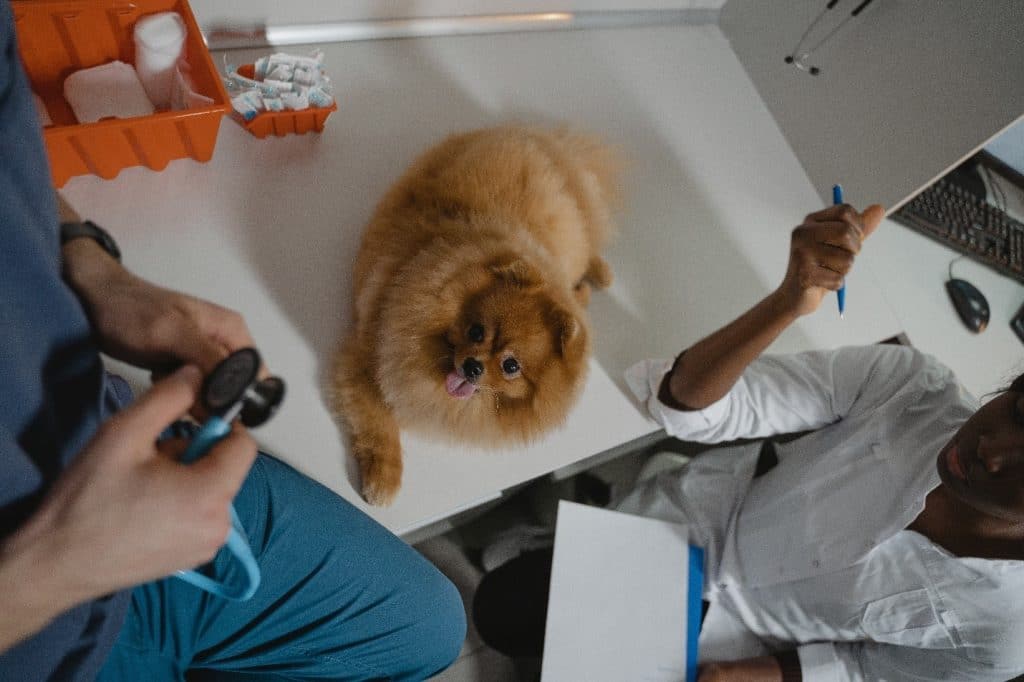A guest post from George J. Newton
You may be wondering how to prevent dog diabetes. Believe it or not, diabetes doesn’t just affect humans – it also affects dogs. When a dog has diabetes, it’s hard for them to produce enough insulin to control their blood sugar levels, thus having the blood sugars build up dangerously.
Without treatment, diabetes can lead to the death of your pet. So, what can you do to prevent diabetes in your dog?
In this article, we’ll explore everything about this disease, and how you can protect your dog from it. But first, let’s look at the symptoms…

How to prevent dog diabetes
What Are The Symptoms?
“Dogs will experience various symptoms, if they have diabetes,” says Brandon Albertson, a lifestyle blogger at Write my X and 1 Day 2 write. “Initial symptoms include increased hunger and thirst, weight loss, lethargy, and frequent urinating.”
If left untreated, diabetes can lead to more serious symptoms like:
- Diarrhea
- Vomiting
- Lack of appetite
- Low energy
- Loss of balance
- Tendency to collapse
- Breath smelling like pear drops or nail polish remover (acetone)
Such symptoms lead to a condition called “diabetic ketoacidosis,” when ketones build up in the body when cells get less energy from blood sugars. Large quantities of ketones can lead to a medical emergency, meaning that you should take your pet to a vet right away.

How to prevent dog diabetes
When is a vet needed?
It’s imperative that you visit your vet regularly. Veterinarians are trained to diagnose and treat your pets. So, if you suspect that your dog might have diabetes, then that’s more than enough to warrant a vet visit. Don’t ever wait until symptoms get worse to get your dog checked for diabetes.

Diagnosing Diabetes In Your Dog
Your vet will most likely run urine and blood tests on your dog to check for diabetes. So, again, if you suspect that your dog might have diabetes, then be sure to take them to the vet. Also, don’t forget to collect a fresh urine sample, so that the vet can check it.
How To Treat Diabetes In Your Dog
Keep in mind: Diabetes is a condition that requires lifelong treatment and commitment. In other words, the condition can’t be treated overnight, especially when your dog is experiencing the early stages of it.
Once treatment starts, you’ll have to keep up with insulin injections, controlled exercising, and controlled feeding. By doing those things, your dog will likely start to feel much better within a week or two.
Remember:
- Insulin injections must be given twice a day, every day, at set times (which are 12 hours apart – within an hour of feeding. While injecting your dog might seem scary at first, your vet will show you how to administer the shots properly.
- Take exercising at a good pace. Don’t rush things – increasing or decreasing your dog’s exercise routines can be detrimental to their blood sugars.
- Feed them twice a day, at set times, 12 hours apart. Don’t give them treats in between meals, since the added food causes high blood sugar. Also, talk to your vet about what foods are right for your pet.
Watch For Complications
Even when treating your pup, you still have to be cautious. If you experience the following:
- You accidentally inject too much or too little insulin.
- Insulin squirts out as you inject.
- Insulin “doesn’t off” if left out of the fridge for too long.
- Your dog doesn’t finish their food, or tries stealing some extra food. OR,
- Your dog vomit after meals…
…then contact your vet. Make it your job to work with your vet, when it comes to your dog’s diabetes.
How to prevent dog diabetes
Stick To Ongoing Care
“When it comes to diabetes, it’s an ongoing recovery process,” says Kaylee Sanderson, a pet blogger at Origin Writings and Brit Student. “Therefore, you must create a routine for your dog, to ensure that their blood sugars are good.
That means giving them their insulin when needed, making sure that they exercise, and feeding them proper portions at meal times. Also, keep in mind that while insulin and exercise make blood sugars dip, food raises it.”
In addition, it’s important to ensure that your pet maintains a healthy weight, so that their diabetes is easier to control. Plus, be sure to monitor them every day, and keep up with their vet visits, so that their diabetes isn’t a growing problem.
What Does The Outlook Look Like?
While diabetes won’t go away entirely, it’s still important to make the most out of your dog’s life. In fact, many well-managed diabetic dogs tend to live long, happy lives, despite their condition.

Conclusion
Ultimately, you’re ensuring that your dog sticks with a healthy diet and routine, so that their diabetes doesn’t grow into a major issue later on. By following this quick guide, you’ll be sure to have your furry friend for many years to come!
Author bio; George J. Newton is a writer and editor at Write my thesis and PhD Kingdom. He is also a contributing writer for Cheap Coursework. As a business development manager, he has helped conceived numerous startups throughout the country.


